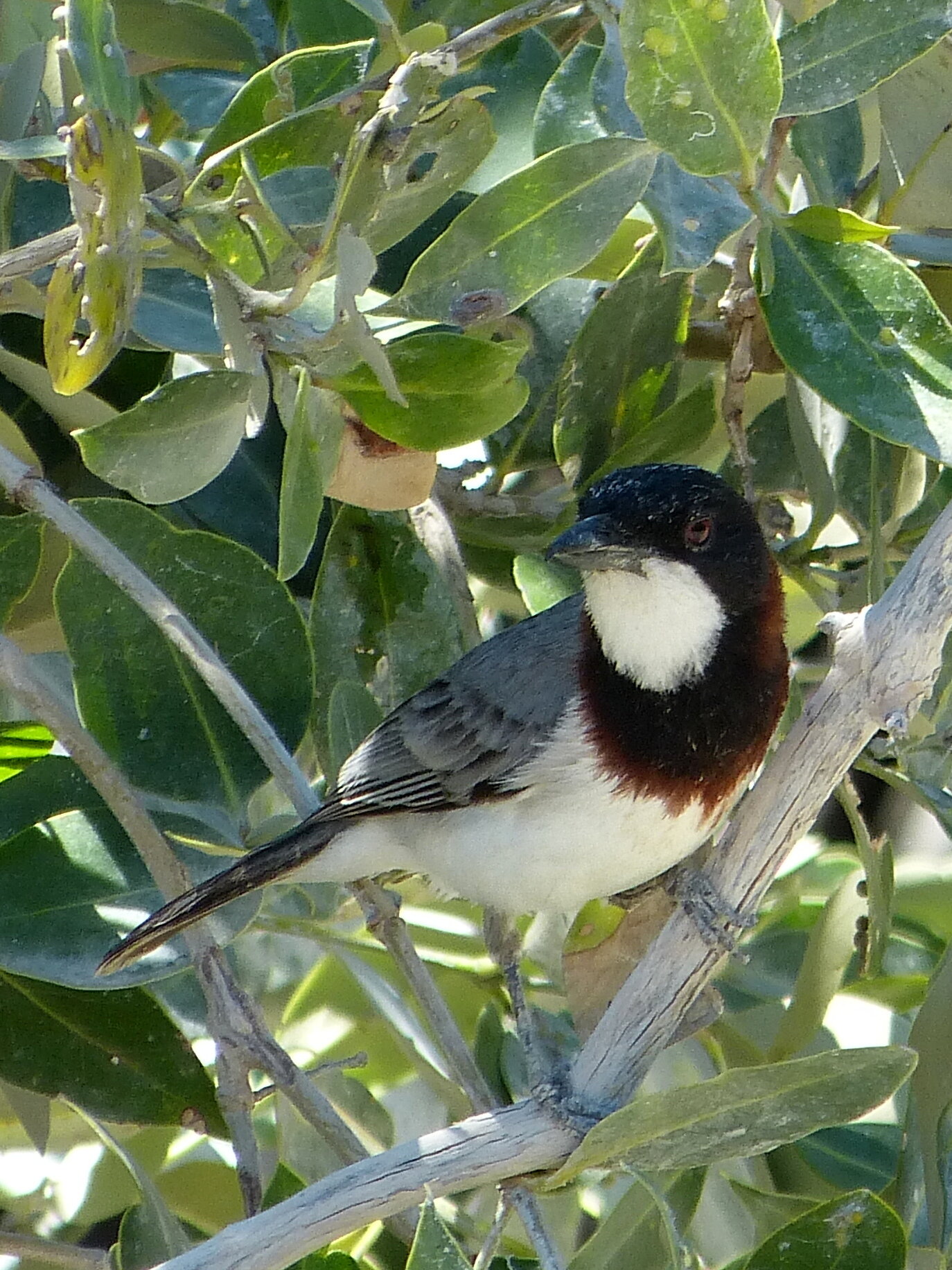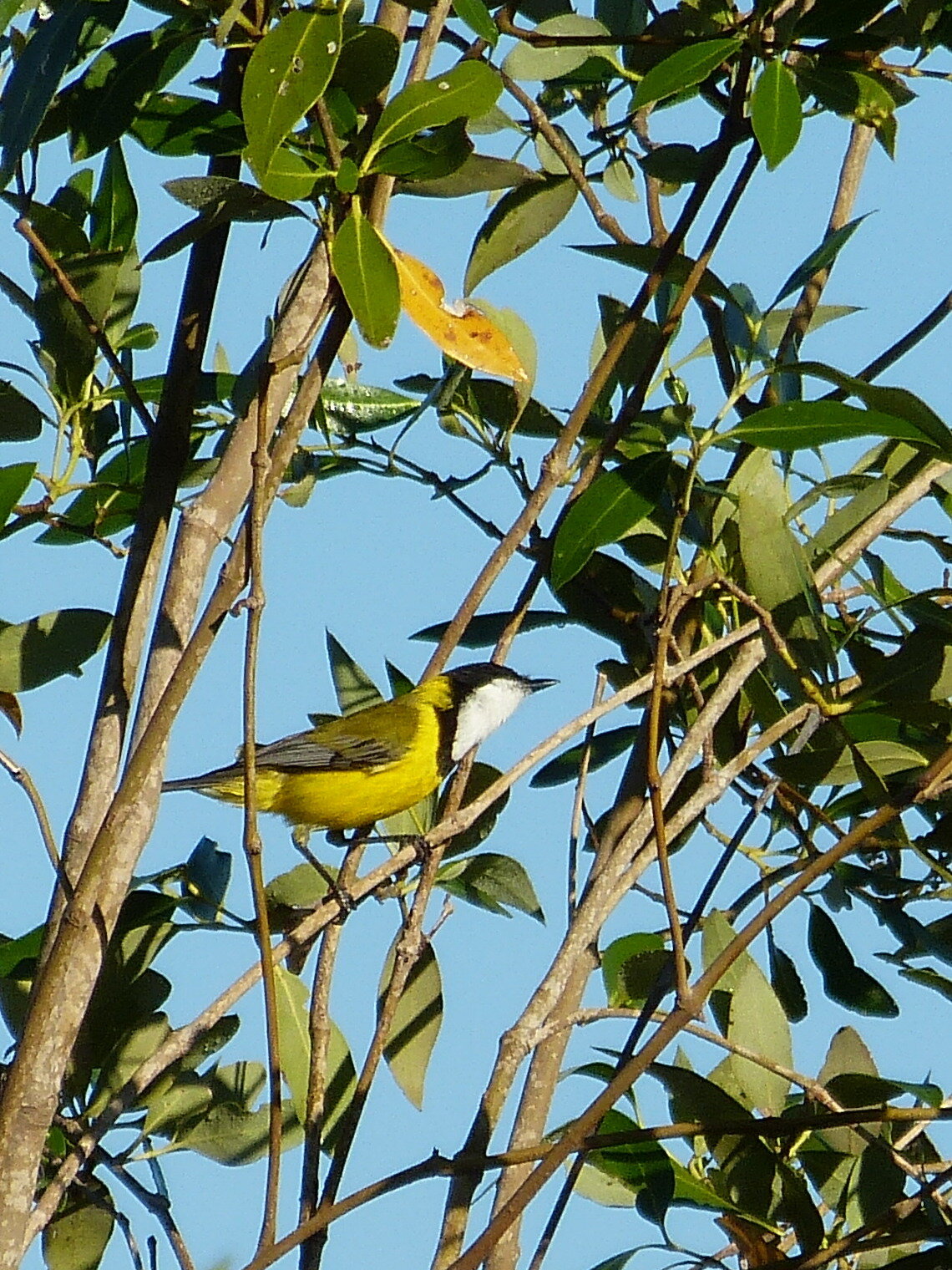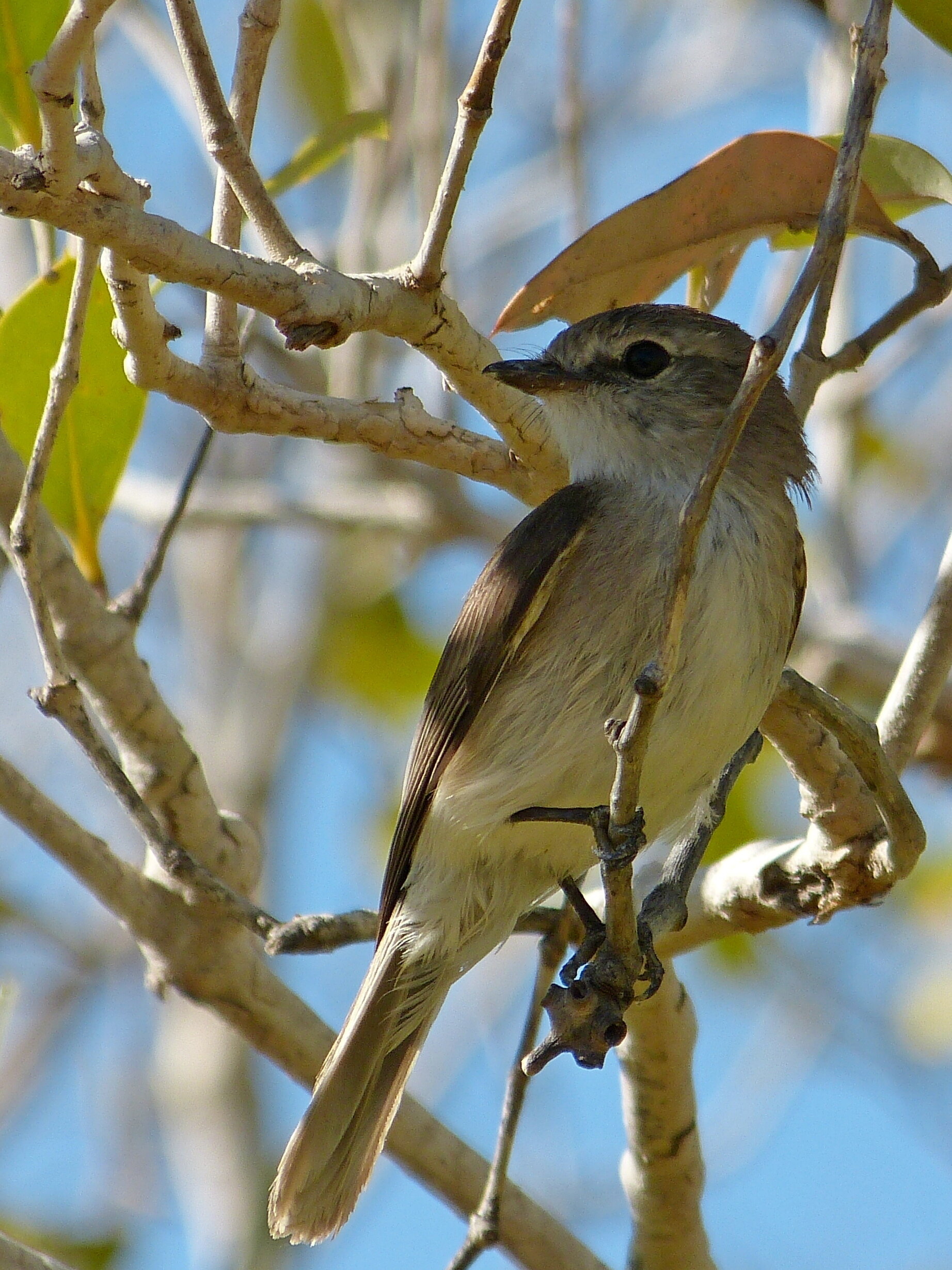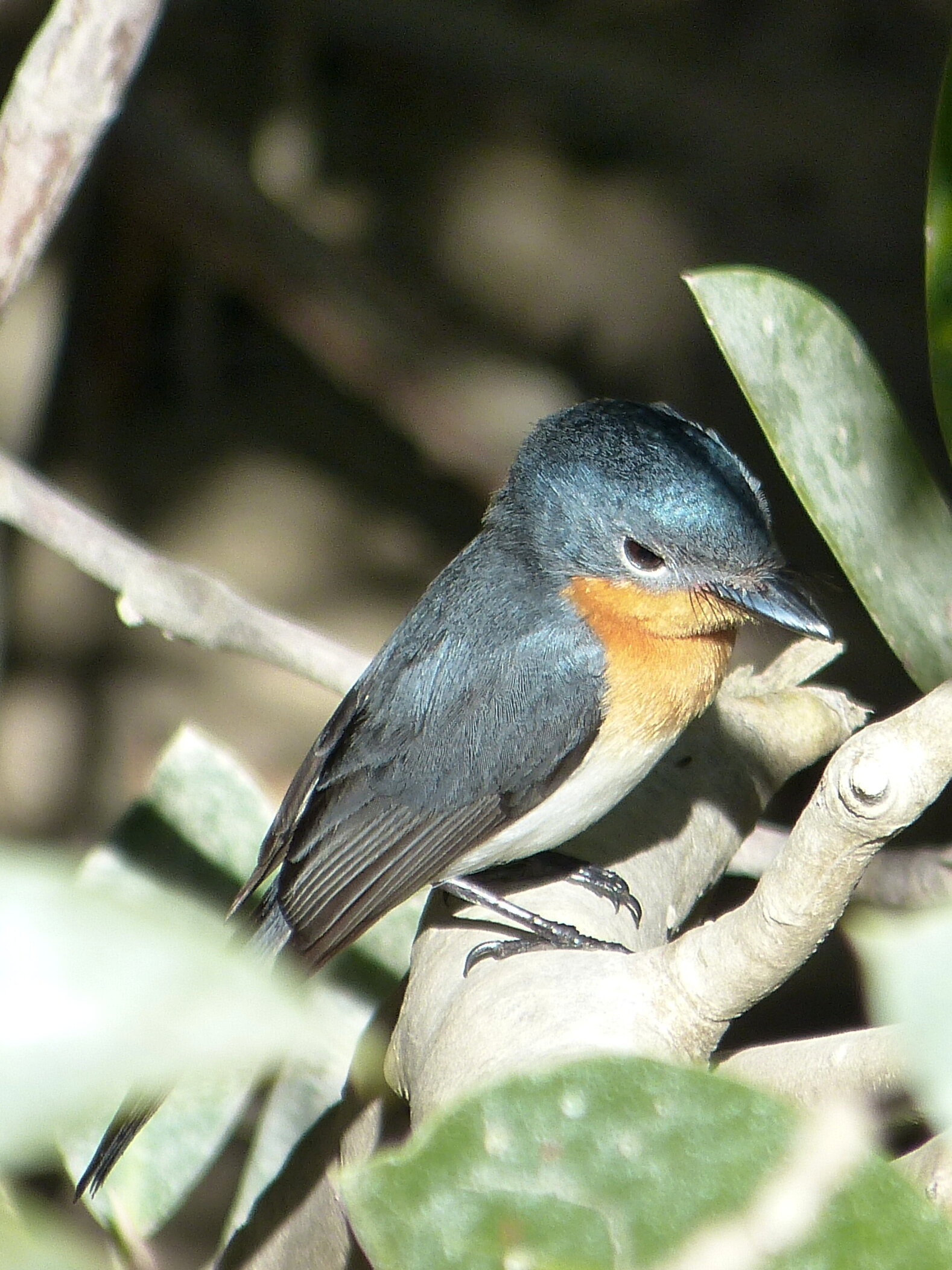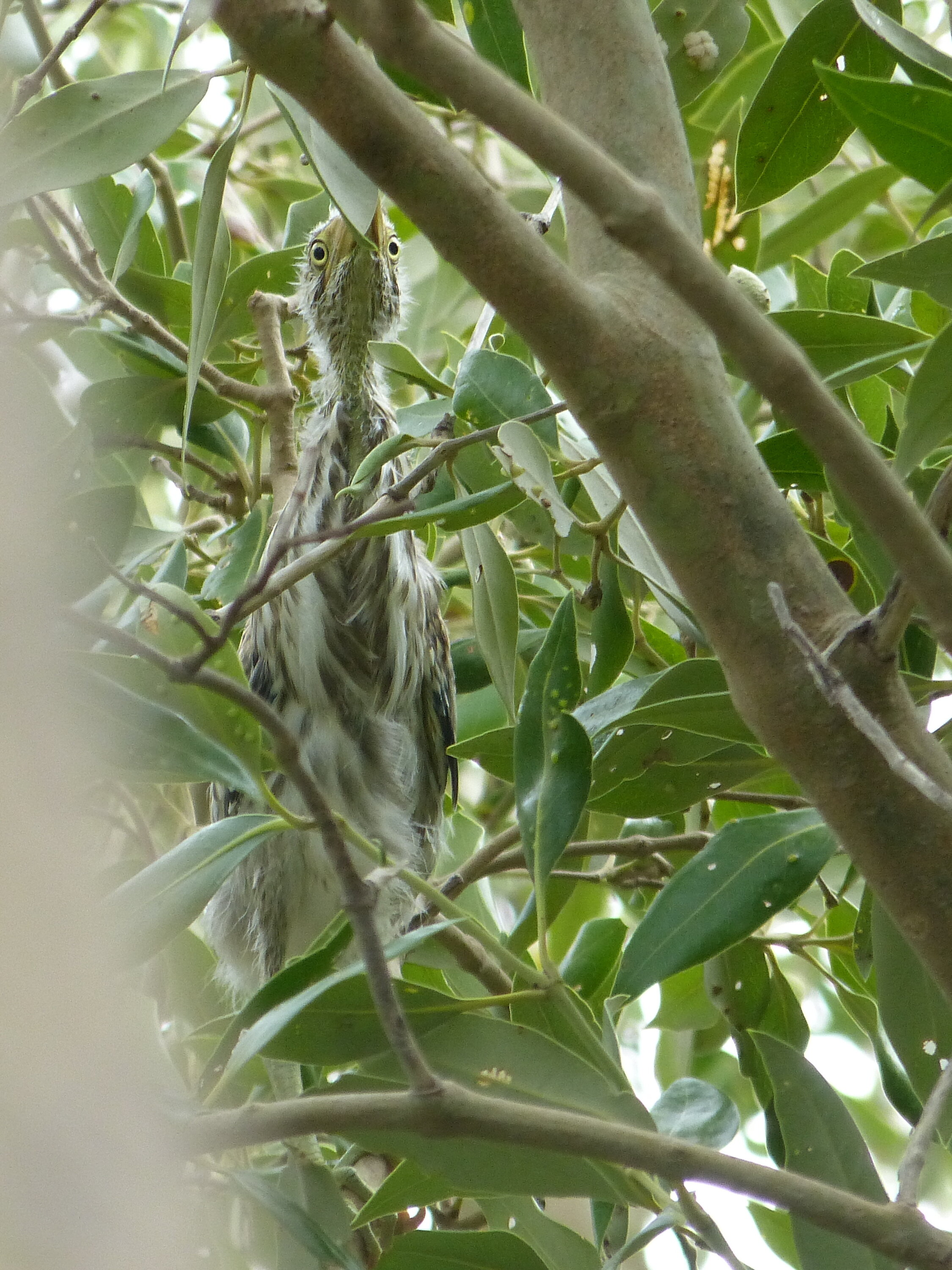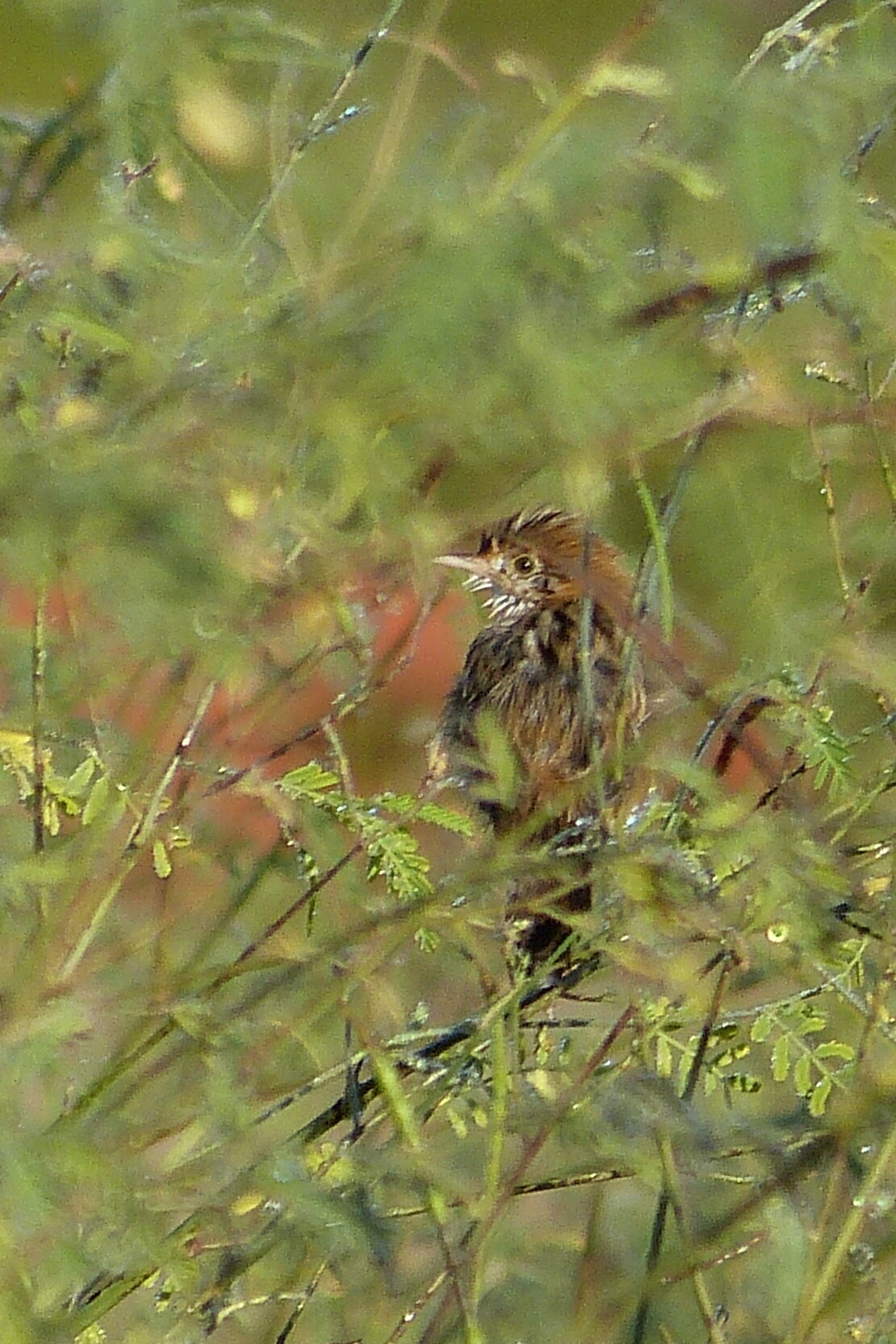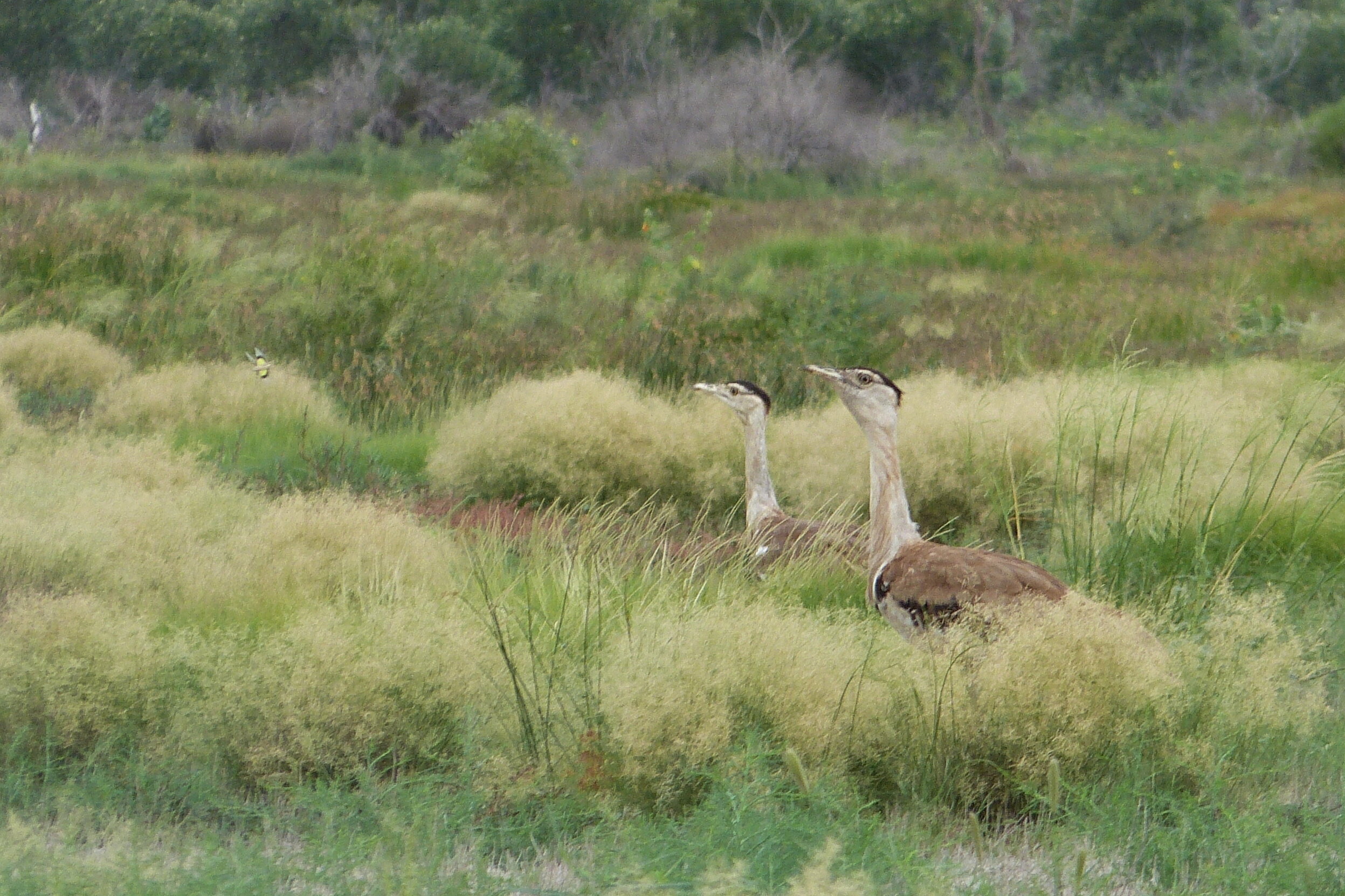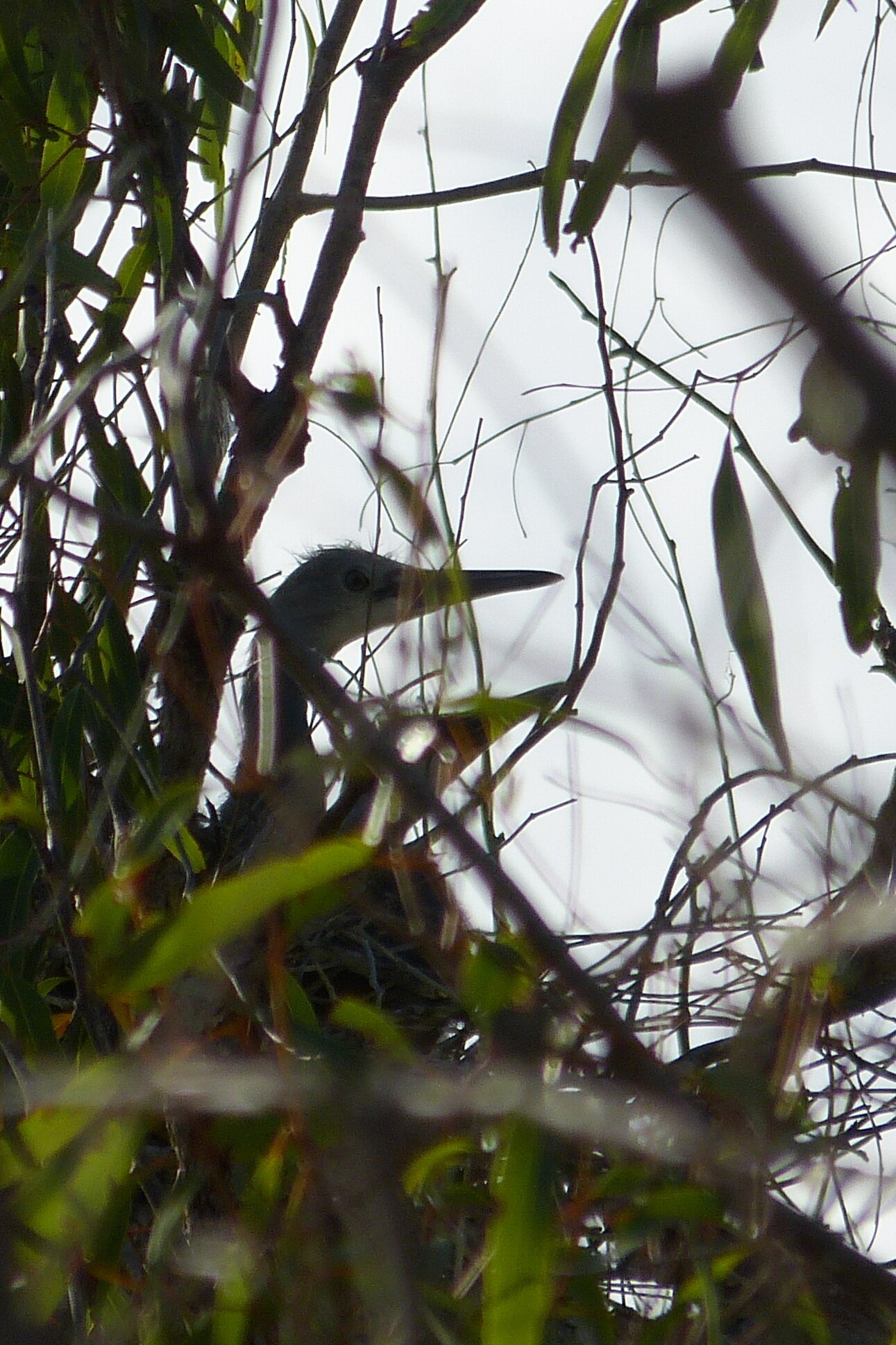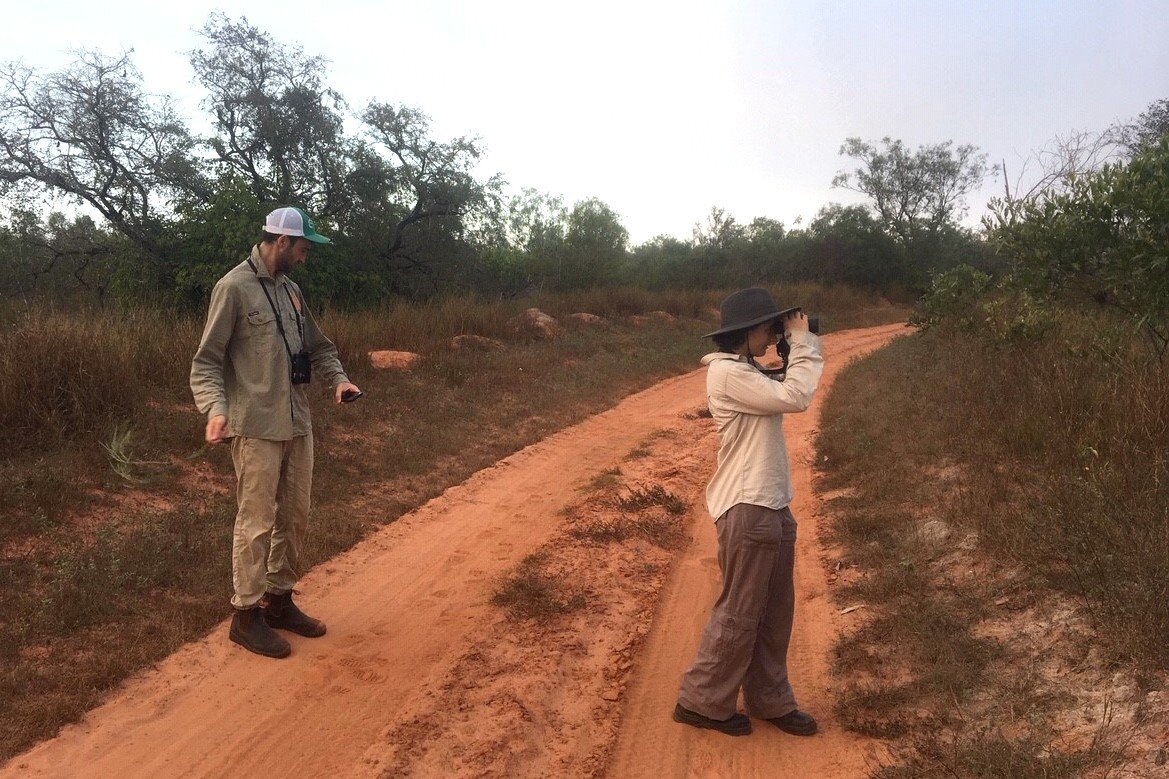The Great Outdoors: Bird Surveys
These past few days have given us cloudy skies, cool weather, 101.8mm of rain, lots of happy singing birds and millions of mosquitos! So as an excuse to stay indoors for a bit and avoid the mozzies, I thought it would be a good time to let you in on what we’ve been getting up to outdoors with our bird surveys.
We record our surveys on our phones using the Birdata app.
As we mentioned briefly in a blog last year, the BBO has worked with BirdLife to implement several surveys to produce regular, robust datasets through the Birdata app. These surveys cover three general habitat areas – the pindan, the mangroves and the plains. During these surveys we record all the bird species that we see and hear and how many individuals we see or hear of each species, as well as noting down any interesting details like juveniles, strange behaviour or the weather. All of these surveys are usually carried out during the early morning as this is when the birds tend to be most active (and when the weather is more pleasant for the surveyors!).
We began these surveys in February 2019 and as of the end of May 2020 have conducted a total of 161 surveys and recorded a total of 128 different species. So far this year we have recorded 105 species. Our all-rounders – those species that have made an appearance at least once on each of our eight surveys – are Bar-shouldered Dove, Black-faced Cuckoo-shrike, Brahminy Kite, Brown Honeyeater, Common Greenshank, Great Bowerbird, Little Friarbird, Mistletoebird, Peaceful Dove, Pied Butcherbird, Red-winged Parrot, Torresian Crow, Tree Martin, White-breasted Woodswallow and Yellow White-eye.
Pindan surveys
Our observatory grounds survey explores the campground, Shadehouse and other parts of the BBO.
A pair of Whistling Kites have a chick in their nest behind the wardens’ house.
The word ‘pindan’, common to all indigenous nations of Dampierland, means open, waterless bush. Since the BBO is nestled in the middle of pindan woodland, our pindan surveys explore the birds around the BBO. Our observatory grounds survey is a nice, simple survey where we spend 20 minutes strolling around the campground, visiting the Shadehouse birdbaths and wandering around the wardens’ house, looking and listening for birds.
What a Spinifex Trail survey can look like.
At 800 metres long, the Pindan Trail is a nice, easy fixed route survey with the potential for a glimpse of Variegated Fairy-wrens. The Spinifex Trail is a bit longer, at 2 km, and involves walking a couple of hundred metres along Crab Creek Road but can be a great place for seeing woodswallows, martins and cuckoos at different times of the year, and for seeing both Variegated and Red-backed Fairy-wrens.
A Variegated Fairy-wren on the Spinifex Trail.
Since February 2019, we have conducted 116 pindan surveys, broken down into 63 observatory grounds surveys, 25 Pindan Trail surveys and 28 Spinifex Trail surveys, and recorded 92 species in total. So far this year, we have completed 21 pindan surveys, 7 of each survey, and recorded 56 different species. By the same time last year we had recorded 67 and by the end of that year we reached 82 species. We still have a bit of a way to go to reach that number, which was probably helped by last year’s unusual influx of Banded, Black, Pied and Spiny-cheeked Honeyeaters between March and July. Our Pindan surveys in 2019 also treated BBO staff to other delights such as Varied Lorikeet, Budgerigar, Cockatiel, Wedge-tailed Eagle and Little Eagle.
A Channel-billed Cuckoo perched in a tree during a survey, before loudly flying over our heads.
This year we haven’t had as grand a line-up in our surveys but getting Black-chinned Honeyeater, Black-faced Woodswallow, Channel-billed Cuckoo and Red-tailed Black-Cockatoo once, twice or thrice on our surveys was pretty special. It was particularly memorable to hear a Channel-billed Cuckoo making a racket and then flying right over our heads during a survey of the Spinifex Trail! Rainbow Bee-eaters and Rufous Whistlers are always delights on our surveys, no matter how many times we see them.
Our ‘usual suspects’ on pindan surveys (those recorded on more than half our surveys) included Bar-shouldered and Peaceful Doves, Great Bowerbirds, Brown and Singing Honeyeaters, Little Friarbirds, Magpie-larks, Black-faced Cuckoo-shrikes, Grey-crowned Babblers, Pied Butcherbirds, Rufous Whistlers, Mistletoebirds, Torresian Crows, Whistling Kites and Yellow White-eyes.
Mangrove surveys
Our three survey areas of the One Tree and mangrove habitats. One Tree (at the top) was flooded by a 10 metre tide when this photo was taken but our surveys take place during low tide.
White-breasted Whistler
Mangroves are amazing, hardy trees that withstand periods of flooding by salty water and periods of no water at all. They and their ecosystems are specialised for this harsh environment and the birdlife there is no different. The White-breasted Whistler and Dusky Gerygone are two species endemic to northern Australia found in the mangroves near the BBO.
Our first 20 minute survey explores the habitat around the One Tree carpark at the end of Crab Creek Road, especially the pindan woodland on one side and the saltmarsh on the other side that gets flooded during 10 metre high-tides. Here we can get a mix of bush birds, mangrove specialists and, occasionally, shorebirds.
Our second 20 minute survey takes us along the mangroves from One Tree to Little Crab Creek and our third 20 minute survey takes us through the mangroves parallel to Little Crab Creek until we can see shorebirds feeding on the creek banks and the edge of the mudflats, depending on the tide.
Our second and third surveys require mudboots (or no boots) as there is lots of mud!
Mangrove Grey Fantails
These two surveys usually give us the most treats with spectacular views of White-breasted and Mangrove Golden Whistlers, Broad-billed Flycatcher, Dusky Gerygone, Striated Heron and Mangrove Grey Fantail (though perhaps not all on the same survey).
Since February 2019, we have conducted 33 mangrove surveys and recorded a total of 84 different species. Eighteen of those surveys were completed this year, six of each survey. So far this year, we’ve recorded 65 species which is 3 species more than last year’s total. By this time last year, we’d recorded 54 species.
Mangrove Golden Whistler
Surveys are conducted at times when the tide is right and usually in the morning when birds are likely to be most active. Sometimes the birds show up nicely and other times those you expect don’t show up at all but those you don’t expect sometimes do. Some of the birds we expected to see in surveys this year but only recorded once were Great Egret, Grey-tailed Tattler and Terek Sandpiper. This could be tide-related or maybe a little bird told them we were coming to do a survey.
When they’re not covered in mud, a Common Redshank’s legs really stand out.
Birds we didn’t expect to see but they showed up anyway included Purple Swamphen last year and Spotted Harrier and Black-necked Stork this year. Finally, there are those special birds that we always hope will present themselves during a survey - like the Kimberley Flycatcher that made itself available for a survey last year and the two Common Redshanks that were feeding on the banks of Little Crab Creek during a survey this year.
Species recorded on more than half our mangrove surveys were Bar-shouldered Dove, Brown Honeyeater, Dusky Gerygone, Mangrove Grey Fantail, Mistletoebird, Torresian Crow, Whimbrel, White-breasted Whistler, White-breasted Woodswallow and Yellow White-eye.
Plains surveys
Black-necked Storks are a real delight to see on the plains.
Golden-headed Cisticola soaked after a foggy morning.
Roebuck Plains to the east of the BBO hosts a variety of bush and grassland habitats good for raptor species, Horsfield’s Bushlark, Brown Songlark and Golden-headed Cisticola. Low lying areas of the plains often flood, due to rain or big high tides, creating good habitats for some shorebird species such as Common Greenshank and Pied Stilt and terns such as White-winged Black Tern and Whiskered Tern.
During the first survey, we walk along a short track through the bush for 20 minutes which usually yields honeyeaters, doves, Mistletoebirds, Pied Butcherbirds and other melodious songbirds.
Our walking plains survey during a foggy morning (there is fog there - it just doesn’t show up well).
Our second survey involves driving 4.5 km along a track through Roebuck Plains and occasionally stopping to listen for birds without the sound of the car engine and scan any waterbodies, as well as scanning the sky and trees for soaring or perching birds of prey. Usually we also see woodswallows and martins flitting and soaring through the air or perched on shrubs.
The view during our driving survey.
Black-faced Woodswallow
Due to various issues last year we were only able to conduct one plains survey. This year, we have conducted 11 plains surveys, 6 of the walking survey and 5 of the driving survey. So far, we’ve recorded 72 different bird species on our plains surveys.
Brown Falcon
Raptors we’ve recorded on our surveys so far have been Black, Brahminy and Whistling Kites, Brown Falcon, Nankeen Kestrel, Brown Goshawk, Osprey and White-bellied Sea-eagle. Other raptor species like Black-shouldered Kite just haven’t managed to get their scheduling right with appearing when we’re doing a survey.
Excitingly, Brolga, Black-necked Stork and Australian Bustard have each managed to make an appearance on at least one of our surveys, to the delight of all surveyors present.
Two beautiful Australian Bustards strutting their stuff on the plains.
A couple of White-faced Heron chicks spotted during a plains survey.
As well as doves, babblers, honeyeaters, bowerbirds and kites, many other species have been observed on more than half our surveys so far including Australian Gull-billed Tern, Black-faced Cuckoo-shrike, Horsfield’s Bushlark, Magpie-lark, Mistletoebird, Rainbow Bee-eater, Red-backed Fairy-wren, Red-winged Parrot, Tree Martin, White-breasted Woodswallow and Willie Wagtail. Australian Magpie (uncommon in the Broome region) managed to get on our surveys twice, as did Brown Songlark, Mangrove Gerygone, Pheasant Coucal and White-winged Triller.
Occasionally mosquitoes make it difficult to concentrate on our surveys but we persist!
We’ve conducted these surveys in the heat, we’ve conducted them in the (relative) cold, we’ve conducted them in the fog and we’ve battled through with them even when there’s been mosquitoes or midges. We love the birds of the Broome region and love that these surveys can collect valuable information about them. The Birdata app is a great tool for contributing rigorously-collected data on birds to a nationwide dataset which can help inform distribution maps, policies and so much more. If you would like to be involved and contribute to nationwide research projects yourself, why not download the app at https://birdata.birdlife.org.au/ and start doing your own surveys?
- Mattea








